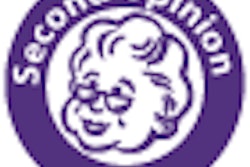Running a high-quality diagnostic imaging service isn't just a matter of buying and installing the right equipment, although, of course, that's the place to start. Even facilities with the most advanced scanners and robust PACS software need a rigorous quality control effort to reduce medical errors and ensure the highest levels of image quality.
It's worth the extra time to put in place quality assurance measures to track the characteristics of problems that can result in medical errors and lower image quality, according to Mary-Theresa Shore, director of clinical operations at Massachusetts General Hospital (MGH) in Boston, and Kathy Tabor McEwan, executive director of Boca Raton Community Hospital (formerly at MGH). Shore and McEwan coached attendees on imaging quality control at the American Healthcare Radiology Administrators (AHRA) annual meeting in Las Vegas.
Cause and effect
Shore and McEwan outlined a few of the typical problems that plague imaging departments: completion, demographics, labeling, technique, protocol, and positioning.
|
Then there's the integrity of the data, according to Shore and McEwan, which can be compromised by unverified, misscheduled, misidentified, mislabeled, merged, or cancelled exams.
|
Not a luxury, a necessity
MGH's emergency radiology department had seen the number of hours required to fix imaging errors increase in 2004 from 81 hours in January to 120 hours in December, Shore said. The equivalent of two full-time employees and one part-time employee were being used to make the corrections. When Shore went to her superiors with the error data, they offered to supply her with two more full-time employees to handle the work. But she knew that if the trend continued, two more staff members wouldn't be enough.
"I told them that if the trend continued, I'd need nine full-time employees, the equivalent of $450,000," Shore said. "There was definitely incentive to reduce the number of errors in imaging."
So in 2006, the hospital performed a quality control pilot study in emergency radiology over six months that included CT, MRI, ultrasound, and general radiology. The primary objective was to reduce the number of errors and error corrections and increase efficiency. The imaging quality control loop would be complete with three components: PACS integrity, image integrity, and data integrity, Shore said.
MGH created an "image integrity" card that all radiologists were asked to fill out and attach to each study. The card included information such as what modality was used, the accession number, and whether there was a problem with positioning, protocol, technique, demographics, or labeling. The project also incorporated a data integrity log that the PACS team used to track errors and report them to the emergency room operations manager. Once it was clear what errors were being made, department staff was given retraining opportunities, according to Shore.
These simple techniques dramatically reduced the hours of rework, Shore said.
|
The MGH team calculated the amount of image integrity problems during the three months prior to the pilot study and found 29 errors for positioning, 25 for protocol, seven for technique, 11 for demographics, 20 for labeling, and 48 for incomplete exams. For the three months postpilot, image integrity errors went down to 11 for positioning, 12 for protocol, two for technique, two for demographics, one for labeling, and 12 for incomplete exams.
The results were also significant for data integrity. During the three month prepilot time frame, there were 11 cancelled exams, 25 misidentified exams, 28 mislabeled exams, 35 misscheduled exams, 37 merged exams, and 39 unverified exams. For the three months postpilot, there were two cancelled exams, six misidentified exams, five mislabeled exams, 11 misscheduled exams, 14 merged exams, and four unverified exams.
"After the pilot, we realized a 67% decrease in hours of rework, a 73% decrease in image integrity errors, and a 76% decrease in data integrity errors," Shore said.
Attention to imaging quality control can increase a department's productivity as well as allow it to expand its services. And besides, the cost of errors is great on many levels, according to Shore.
"Not only are there clinical implications as a result of errors, such as mistreatment, misdiagnosis, and delayed care, but there are also financial implications," she said. "More errors mean additional full-time employees, more lawsuits, and, of course, repeat exams."
By Kate Madden Yee
AuntMinnie.com staff writer
September 7, 2009
Related Reading
Web-based issue-tracking system boosts radiology QC, April 4, 2008
Effective communication is crucial for radiology department success, March 20, 2008
Using informatics to meet communication challenges, February 7, 2008
High-tech communication tools improve patient care, studies find, December 6, 2007
Copyright © 2009 AuntMinnie.com



















